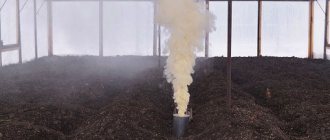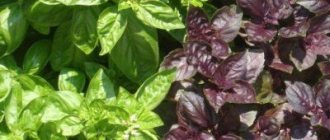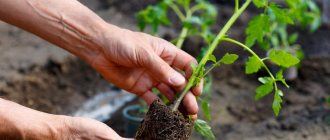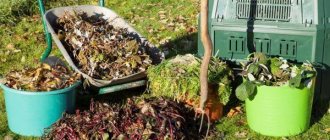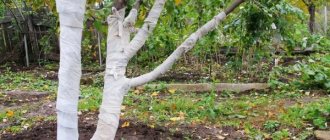Arguments for an open door
Frosty air disinfects the inside of the greenhouse.
Some gardeners believe that there is no need to close the greenhouse door for the winter. At the same time, the internal space and equipment must be properly prepared for wintering.
This opinion is supported by facts:
- During natural frosts, the room is completely disinfected, harmful microorganisms die
- frost prevents the appearance of condensation and mold;
- Over the winter, the greenhouse becomes ready for the new season of planting crops.
In the fall, after harvesting, plant residues are removed and weeds are removed from the beds. They remove other garbage and burn it along with the floral remains.
Soil cleaning is carried out in 2 ways:
- remove only the top layer of earth in boxes to a depth of 10 - 15 cm;
- completely remove the soil from the beds and add it again in the spring.
The remaining soil inside is dug up and sprayed with a solution of potassium permanganate so that with spring warming, harmful microbes and bacteria do not penetrate into the greenhouse. In winter, in the cold regions of Russia, strong winds and snowstorms are observed, so in the fall the integrity and condition of fences and roofs are monitored. If the structures are not strengthened, snow and wind will damage the finish and render the greenhouse unusable.
Before opening the greenhouse, the wooden frame parts are treated with antiseptic agents to prevent rotting from excess moisture on snowy days.
Polycarbonate on the roof requires special attention, since disinfectants can destroy the protective layer from ultraviolet radiation.
Opinions on closing greenhouses
Reading reviews on forums and in comments to articles, I found many reviews that said that the door in the greenhouse should still be kept closed. That's what they say.
- Keeping the door to the greenhouse closed in winter makes it possible to keep poultry there, since there is a difference in temperature of approximately 10º or more.
- During the winter, a greenhouse is a place for storing gardening tools and boxes of soil for seedlings.
- Instead of doors, you can ventilate by opening only the windows.
- Through open doors, a gust of wind can tear the greenhouse off its base, turn it over, and carry it to a neighboring garden.
Arguments for a closed door
Animals will not enter a closed greenhouse.
It is recommended to close greenhouses in the northern regions of the country. In these areas, significant gusts of wind along with winter frost tear off polycarbonate sheets and tear the film into pieces.
Proponents of the closed door argue:
- a closed door protects against heavy snow and gusty winds;
- wild and domestic animals do not penetrate inside;
- there is no way to rob the premises, take out equipment, or break the frame of the beds.
A room closed for a long time without fresh air flows accumulates condensation from internal evaporation, so mold develops in the greenhouse. Stagnant, humid air will ruin the wooden parts of the greenhouse frame; even antiseptic preparations will not help. A green coating appears on polycarbonate, which is difficult to remove from the surface. In this regard, the greenhouse must be properly prepared.
Before closing for the winter, the following activities are carried out:
- sweep away garbage, organic matter, remains of stems and leaves of vegetable crops from the premises;
- check insect nests in corners and crevices and remove them;
- seal all cracks outwards, preventing drafts;
- wipe washable surfaces with a damp cloth;
- elements of the beds (sides, decking) are treated with a soap solution after removing the soil;
- the wood is impregnated with antiseptics;
- the room is disinfected by fuming it with sulfur, spraying it with a solution of bleach;
- steel elements in the structure are painted with oil paints and pentaphthalic enamels.
In winter, the surrounding area is cleared of snow to reduce the absorption of melt water and reduce the influence of soil moisture on the fencing elements. Iced snowdrifts melt slowly, reducing the rate of soil heating after winter with the onset of spring.
Advantages and disadvantages of an enclosed greenhouse
The doors and windows of the greenhouse are closed for the winter season mainly by those agronomists who treat the soil with all kinds of complex additives in the fall. The benefits of using these fertilizers remain provided that the greenhouse is tightly closed in winter . In this case, the soil will be fertile.
Despite this significant advantage, a closed greenhouse has disadvantages, since agronomists will have to take care of soil moisture in the spring . To do this, you need to do additional work: thoroughly water the soil in the greenhouse with melt water or throw snow into it. This is necessary for the subsequent growth and development of planted crops.
Another problem is that indoors, fungi and mold appear on the polycarbonate walls. They spoil the appearance of the structure and darken the polycarbonate coating. In an open greenhouse, air circulates, so such phenomena are not observed.
Condensation in a greenhouse
Polycarbonate can crack due to frozen condensation.
Reasons for the appearance of condensation in a greenhouse in winter:
- In winter, the sun warms up the walls of the greenhouse a little, and drops appear on the ceiling and walls due to the difference in internal and external temperatures;
- Unharvested parts of plants emit carbon dioxide, and the remaining moisture evaporates and settles on the internal surfaces.
At first glance, drops on the polycarbonate surface are harmless, but they cause harm in the form of powdery mildew, mold, late blight, root rot, and spider mites that have settled inside. These microorganisms will survive the cold inside a closed greenhouse, and in the spring they will harm crops with renewed vigor. High humidity causes the metal frame to deteriorate and the polycarbonate filling of the roof to become moldy.
Drops of water on the walls of the greenhouse begin to expand when they freeze, so the top layer of wood, polycarbonate, cracks. If the greenhouse is closed, there will be more such water particles, and the danger of destruction will increase.
Experts recommend opening a polycarbonate greenhouse for the winter to reduce the destructive effects of condensation and microorganisms.
How to prepare a greenhouse for winter: answers to all questions
The greenhouse must be prepared for winter as soon as the last harvest has been harvested from it. In winter, the greenhouse must also work - preserve useful elements in the soil and create conditions for rotting organic matter.
What needs to be done so that in the spring you get loose, warm soil in which you can plant vegetables 2-3 weeks ahead of schedule? Get rid of pathogens (tomatoes often leave behind a fungus called late blight), apply fertilizer and preserve the greenhouse until spring.
Tip: Don't let the soil sit bare after harvesting. Sow it with green manure - they fertilize, structure and enrich the soil with microelements.
Stages of preparing the greenhouse for next spring
Treatment of the greenhouse for the winter should take place at a temperature of 10-15°C - in late summer or early autumn. Solutions and mixtures for disinfecting and nourishing soil do not work at low temperatures.
Advice: if the soil is heavily infested with pests, remove it in a layer of 20-25 cm and replace it with a nutritious soil mixture.
Greenhouse care: wash and seal
First, empty the greenhouse of all unnecessary things. After harvesting, remove the equipment from there and remove all plant garters. Do not reuse the fabric for tying - pathogens can overwinter on it.
Wash the walls of the greenhouse thoroughly to remove stuck leaves and pathogens. You need to wash polycarbonate carefully so as not to damage the coating; do not use metal brushes or brushes with hard bristles.
To properly treat the entire surface for the winter, use solutions: soda, mustard, bleach, formaldehyde.
Check the greenhouse for gaps and cracks. If you find damage or voids between the polycarbonate sheets, seal them with covering material or silicone sealant.
Disinfection and soil preparation: to fumigate or not?
A popular means for treating the entire greenhouse is sulfur bomb. It needs to be lit and smoked for 3 days (don't forget the protective equipment). During this time, the greenhouse is closed, and after that everything needs to be thoroughly ventilated.
However, not everyone is ready to use this method for polycarbonate greenhouses, as it may darken.
If you want to completely clean the soil, then add ash and those fertilizers that are suitable for the vegetables planned in the spring. Dig up and leave the greenhouse open for the winter - the frost will destroy the diseases.
If you want to get loose and already nutritious soil in the spring for early planting, you need to sow green manure.
What green manure should I sow, and what should I do with it in the fall?
Green manure is a plant that prevents weeds from rising, improves soil structure and is a fertilizer in itself. They saturate the soil with nitrogen, phosphorus, and microelements. The most popular green manures: white mustard, phacelia, vetch, oats.
Tip: Pay attention to the acidity of the soil to choose the right plants. So, mustard increases acidity, and phacelia reduces it.
It is beneficial to sow the soil with a mixture - this increases the grass cover, and the roots of different plants go to different depths. Therefore, structuring and “loosening” the soil is more effective.
Whether or not to dig up the soil before planting is up to you.
After sowing, water the green manure with a disinfecting solution (for example, with phytosporin) and retain moisture and heat in the ground by covering the beds with film or spunbond. Heat is necessary for beneficial bacteria that will develop in the garden bed.
The main question for gardeners is whether it is necessary to dig up and grind green manure for humus when they begin to bloom. In fact, the effect of plants dug up, cut or left to freeze in the spring is the same, so choose the method that is convenient for you.
Advice: if the stems begin to “wooden,” it is better to cut the plants and lay them on the bed as a carpet. Hard stems take a long time to rot, so interrupt the growth of green manure if necessary.
Why do you need snow in a greenhouse - and is it necessary?
If you cover the ground with snow, the soil will receive additional moisture and will not freeze. You can cover winter plantings with snow so that they can safely overwinter.
The only contraindication for throwing snow is groundwater located close to the surface of the earth. In this case, in the spring you will not get soft, loose soil, but a swamp. If you want to further insulate such soil, place covering material on the beds.
Otherwise, the question of whether to add snow or not depends on the preferences of the gardener.
Do I need to open the greenhouse for the winter? Yes, if you freeze the soil. In other cases it is not recommended, but it is necessary to ventilate even in winter.
Prepare your greenhouse for spring planting correctly - and harvest the first harvest before your neighbors.
Source: https://teplica52.ru/biblioteka_sadovoda/kak-podgotovit-teplicu-iz-polikarbonata-k-zime/
Structural weakening and breakage
It is important to check the strength of the structure and strengthen the door hinges.
The safety of the moving parts of the structure, for example, window sashes and door panels, is important. Open doors and windows are affected by wind, snow, and wet rain.
Breakdowns and their causes:
- unfixed sashes of window frames come off in strong winds, and the glass in them breaks from the impact;
- unstrengthened entrance door panels will flap during whirlwinds, blizzards, and may break;
- the open elements are affected by the force of gravity from the adhering and frozen snow, they sag under the weight;
- weakened hinges work successfully in good weather, but in extreme frost conditions, they cannot withstand snowstorms and bend;
- if thin polycarbonate is installed, the sheets may crack when struck by icy particles;
- During a hurricane, a greenhouse can fly to a neighboring site and the frame will break.
They prepare the structure for wintering before opening the doors and transoms of the greenhouse. If possible, the owner should remove the window sashes and door panels. Otherwise, they are secured to prevent them from being blown out by the wind.
Window transoms are tied in the open position, and a support is placed under them to support the snow mass. The doors are fixed to the wall and pegs are driven into the ground. Wooden spacers are placed inside so that the snow stuck on the roof does not push through the roof. Check the awnings, if the screws are loose, tighten them. The open ends at the cut of polycarbonate sheets are covered with plates so that moisture and snow do not get into the honeycombs.
Pros and cons of ventilation
An open greenhouse also has significant advantages. Agronomists say that in a ventilated area:
READ ALSO: Autumn treatment of greenhouses against pests and diseases
- The soil is naturally disinfected and rests, making it more fertile.
- Conditions are as close to natural as possible. Rain and snow fall into the open greenhouse, which moisten the soil in the same way as throughout the garden plot.
- At sub-zero temperatures, the ground freezes well, thanks to which all harmful fungi and bacteria are destroyed in the soil, which in the future can harm plants.
- During the thaw, the soil thaws and is actively saturated with useful microelements.
The open option also has some disadvantages. One of the main disadvantages is possible damage to the structure , since polycarbonate is a rather vulnerable material. First of all, this drawback affects gardeners living in regions where low temperatures prevail in winter and there are strong winds.
To avoid damage to the frame or polycarbonate coating, it is recommended to thoroughly prepare for wintering. To do this, it is necessary to remove all vegetation, as well as strengthen open elements so that they remain motionless during gusts of wind.
The decision about whether to open the doors and windows of the greenhouse or not is made by the gardener himself. But in any case, you should follow the advice of experts.
It should be remembered that not only the condition of the structure, but also the quality of the future harvest .
Installation of windows with automatic opening
Window with automatic opening
Transoms with periodic automatic opening are used in greenhouses in winter. This is an improved vent model. The system will require an electrical power source.
When the temperature rises to the set value, the sensor and thermostat activate the engine. The motor, using a system of levers, moves the sash. When the temperature drops, the automatic device also operates, the lever lowers the transom, and the window slams shut.
The machine is selected depending on the square footage of the greenhouse and the dimensions of the window sash:
- For heavy transoms installed on the roof, a powerful unit is purchased, since it is difficult to lift such a structure; for this purpose, hydraulic oil-type engines are used.
- For side and not too heavy ceiling sashes, pneumatic units are chosen.
- The opening of light side windows can be controlled by a drive based on bimetallic plates.
A certain number of transoms are required for ventilation to be successful in winter. To do this, there is one opening opening per 2 linear meters of the greenhouse walls. It is better to place them in a checkerboard pattern on both sides.
The total area of the opening sashes should be one fourth of the glazing area. If the greenhouse is divided into parts by partitions, ventilation is organized in each of them.
Greenhouse door for the winter: should I close it or not?
If growing vegetables or herbs in winter is not planned, the question of whether to leave the greenhouse open for the winter is not in doubt for some experienced farmers: with the doors closed, freezing out diseases and parasites may not fully occur. Worry about whether it is necessary to open the doors of the greenhouse for the winter rather haunts many novice gardeners. There cannot be a definite answer, since different regions have their own weather conditions: some areas experience severe frosts and heavy snowfalls, while other areas are known for strong winds.
In the south of Russia (Krasnodar Territory and Rostov Region), if the greenhouse is built in an open place or on a hill, leaving the door open unattended can be dangerous: strong winds may damage the structure.
In other cases, when a thaw occurs after severe frosts, condensation forms inside the greenhouses; periodic ventilation is necessary to remove it. Prolonged dampness in cold weather causes the bottom and corners of the walls to turn green and become covered with mold.
Each owner decides for himself whether it is necessary to close the greenhouse for the winter, based on a number of circumstances:
- if the owners live in the country, the structure can be opened for periodic ventilation;
- when there is no one to look after the greenhouse in winter, it is still better to close the door.
By visiting the dacha from time to time, the owners can ventilate the greenhouses during their stay there. Owners of summer cottages who live in the city in winter take into account another important point: homeless animals can live in the buildings. It is worth considering all possible situations when deciding whether to close the greenhouse for the winter.




